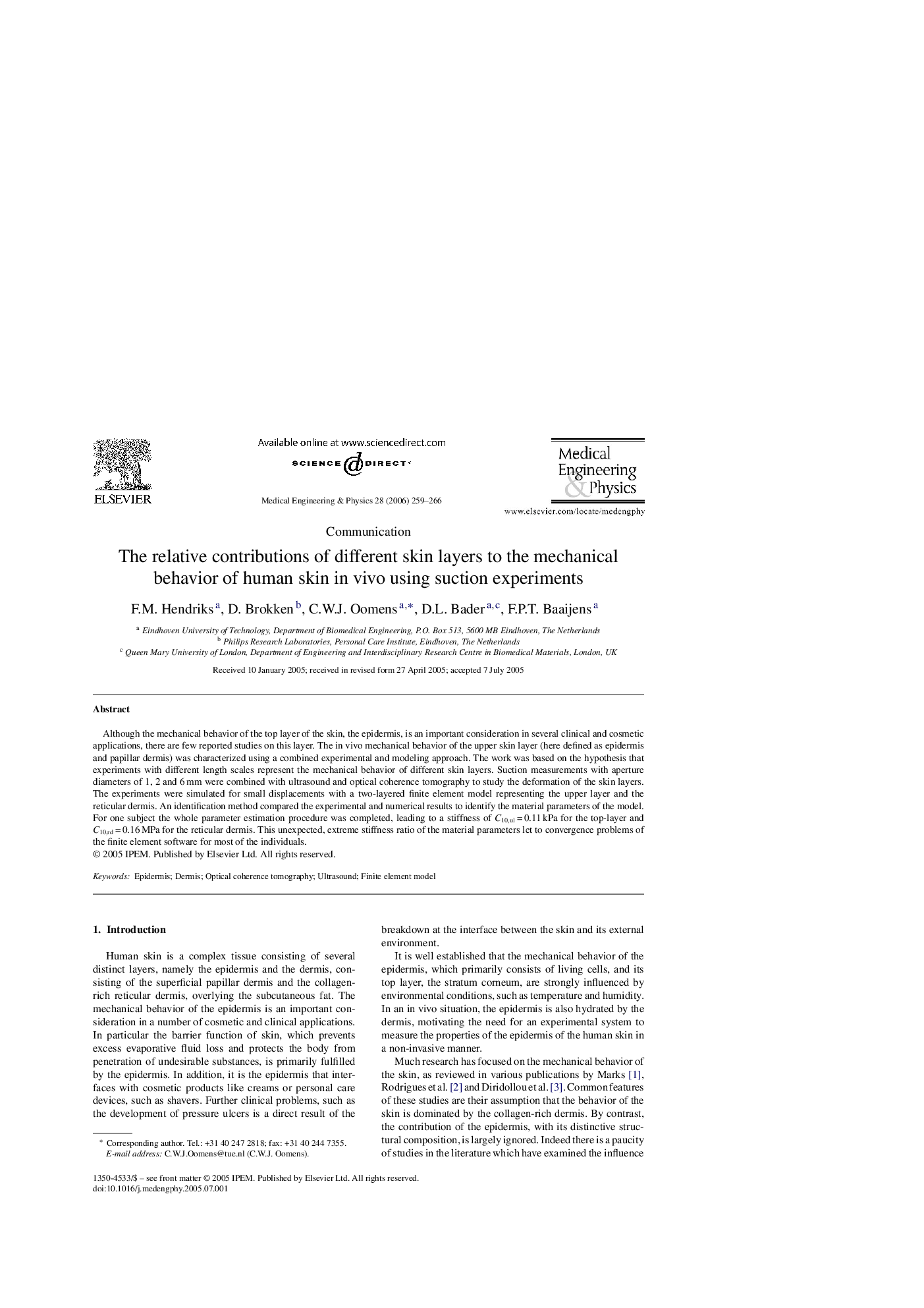| Article ID | Journal | Published Year | Pages | File Type |
|---|---|---|---|---|
| 877344 | Medical Engineering & Physics | 2006 | 8 Pages |
Although the mechanical behavior of the top layer of the skin, the epidermis, is an important consideration in several clinical and cosmetic applications, there are few reported studies on this layer. The in vivo mechanical behavior of the upper skin layer (here defined as epidermis and papillar dermis) was characterized using a combined experimental and modeling approach. The work was based on the hypothesis that experiments with different length scales represent the mechanical behavior of different skin layers. Suction measurements with aperture diameters of 1, 2 and 6 mm were combined with ultrasound and optical coherence tomography to study the deformation of the skin layers. The experiments were simulated for small displacements with a two-layered finite element model representing the upper layer and the reticular dermis. An identification method compared the experimental and numerical results to identify the material parameters of the model. For one subject the whole parameter estimation procedure was completed, leading to a stiffness of C10,ul = 0.11 kPa for the top-layer and C10,rd = 0.16 MPa for the reticular dermis. This unexpected, extreme stiffness ratio of the material parameters let to convergence problems of the finite element software for most of the individuals.
